Lessons from the Educating for Sustainability workshop
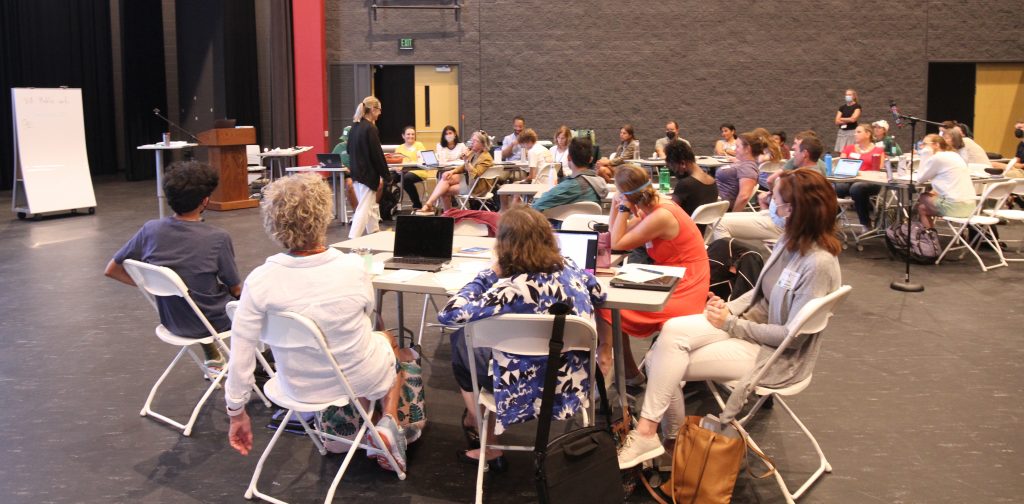
What does it mean to Educate for Sustainability? On August 9th and 10th, 2022, DA faculty and staff, upper school students, and parents, welcomed Jaimie Cloud of the Cloud Institute for Sustainable Education to lead us in answering this question for ourselves.
While many folks anticipated hearing the refrains of “compost to reduce food waste”, or “reduce, reuse, recycle”, we were instead led in a more encompassing experience: exploring how schools can foster a sense of agency amongst all community members and can motivate learning and action in service of long term sustainability goals.
The first activity involved a “fishing” simulation in a pool of finite resources. Jaimie led us to reflect afterward on the mental models that governed our choices as we competed, or unsuccessfully collaborated, with others to harvest from this “commons.” We realized that focusing on individual coping strategies, and thinking of ourselves as separate from ecosystems, resulted in failure.
Through a series of lectures, discussions, games, and opportunities for reflection, participants bonded across ages, departments, and institutional roles. They came to realize the truth of the adage “we’re all in this together”. In exit surveys, adults described feeling inspired by the powerful contribution of students, and students wrote with appreciation about adults taking days out of their summer to focus on sustainability. Everyone seemed to leave with a sense of optimism.

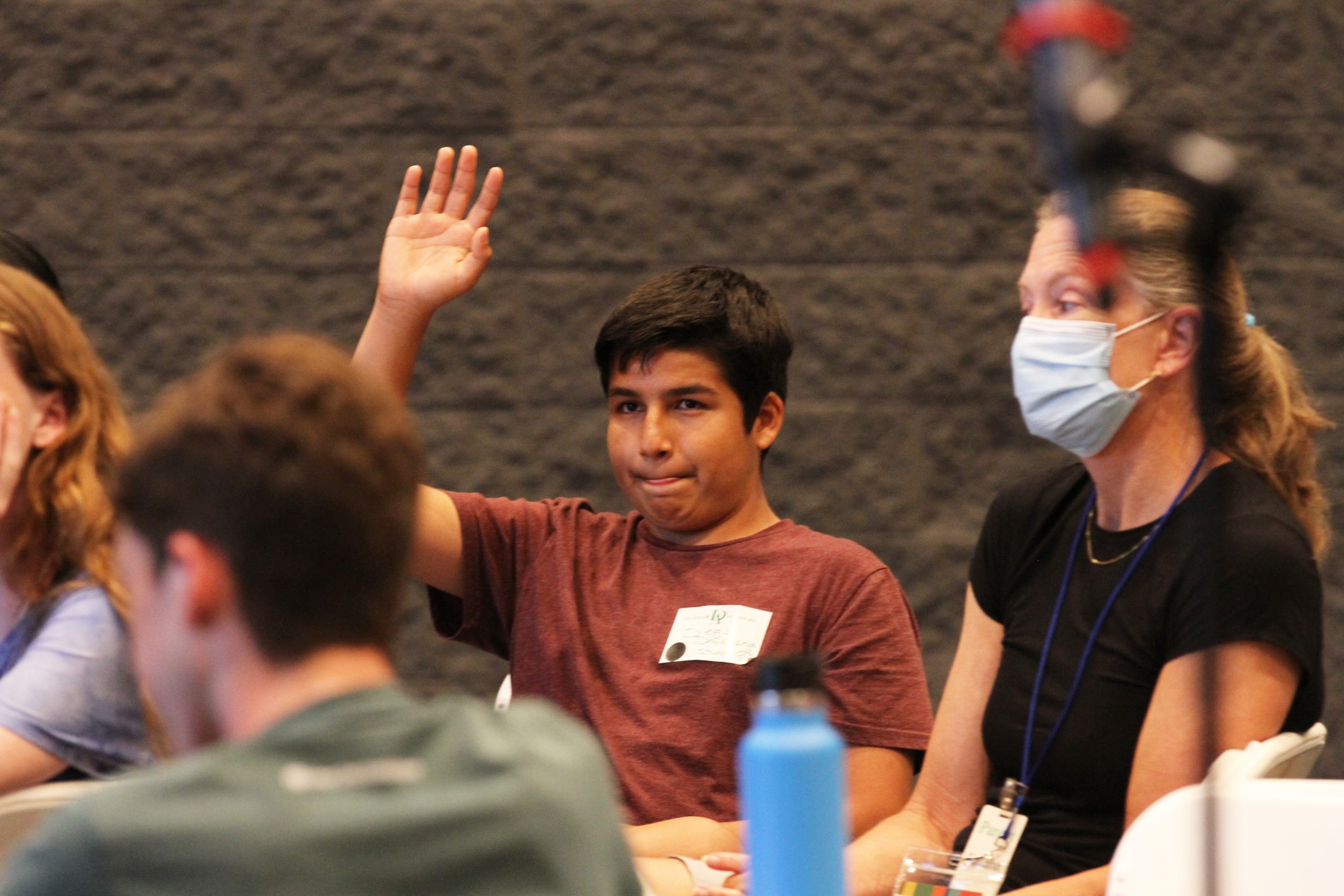
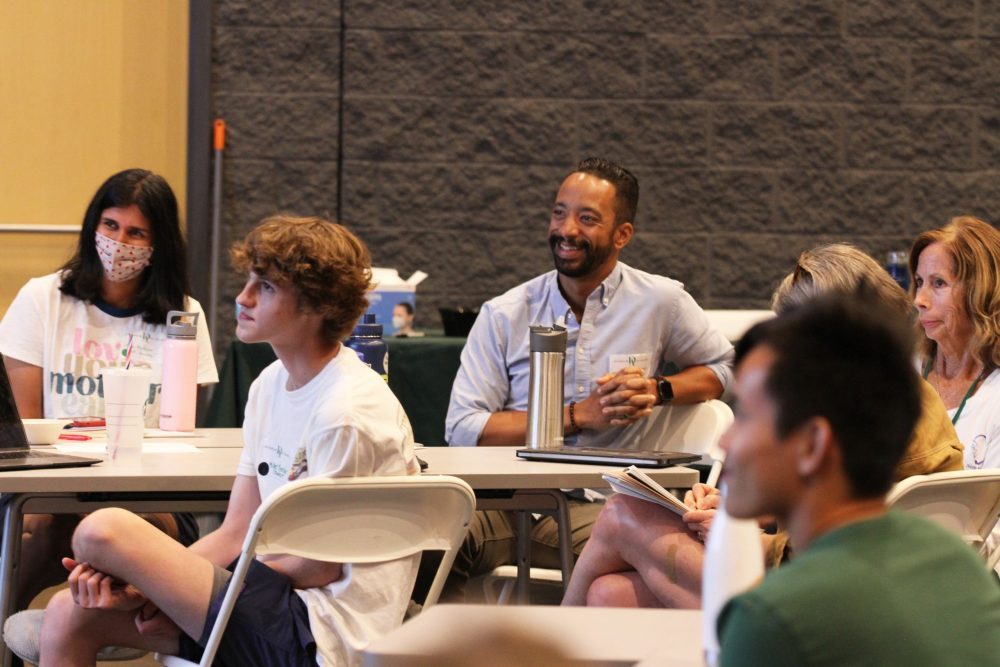
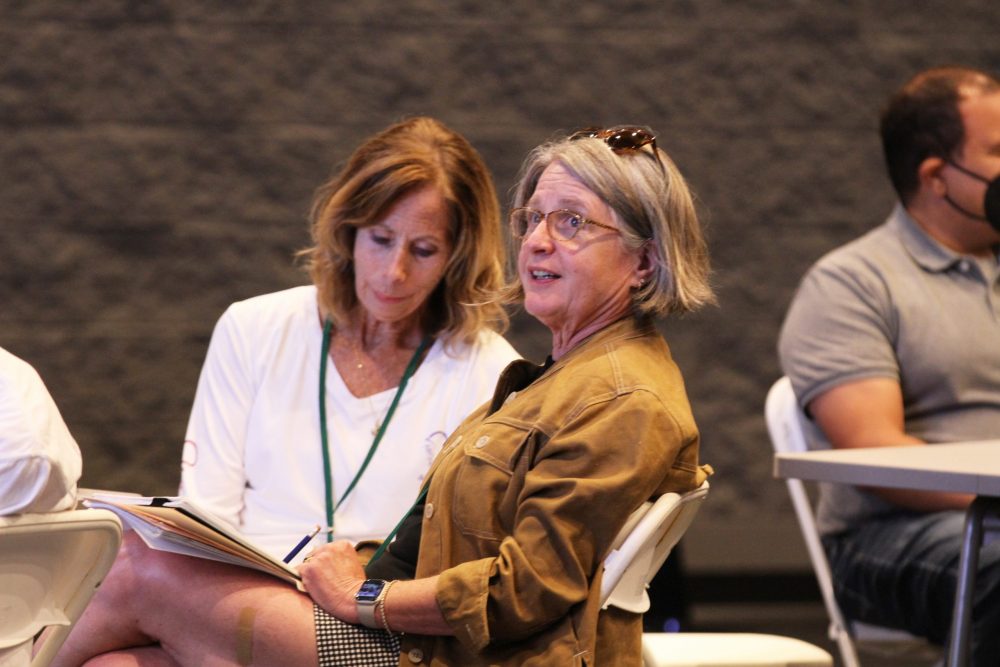
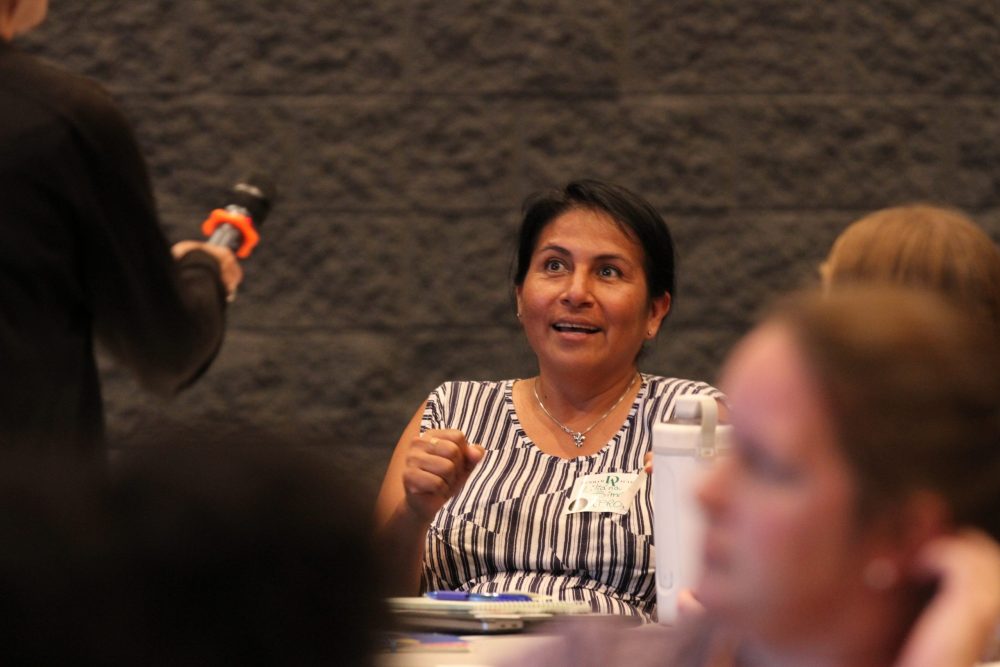
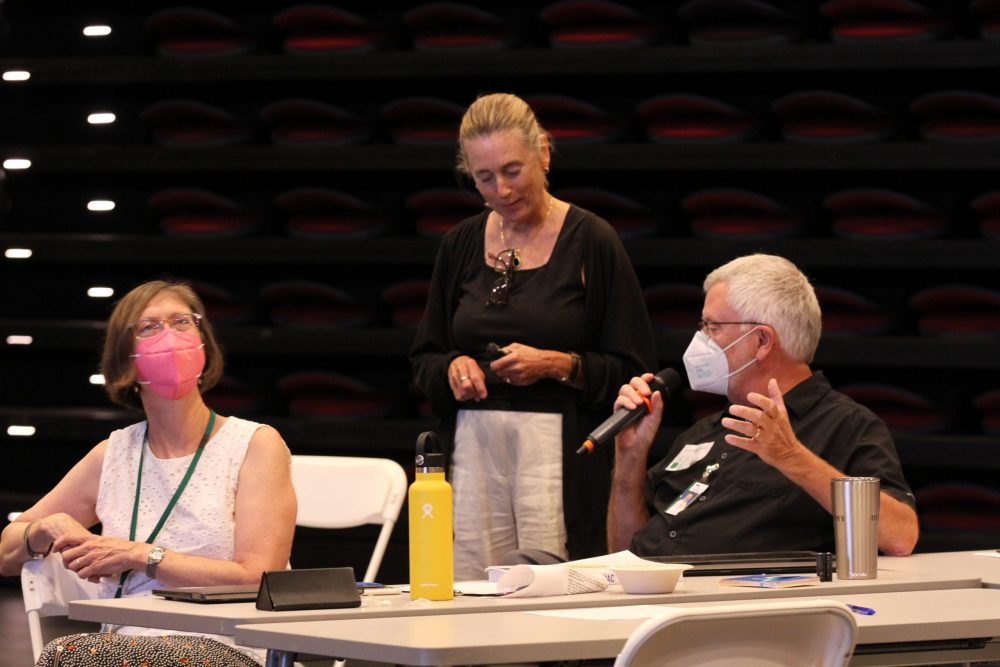
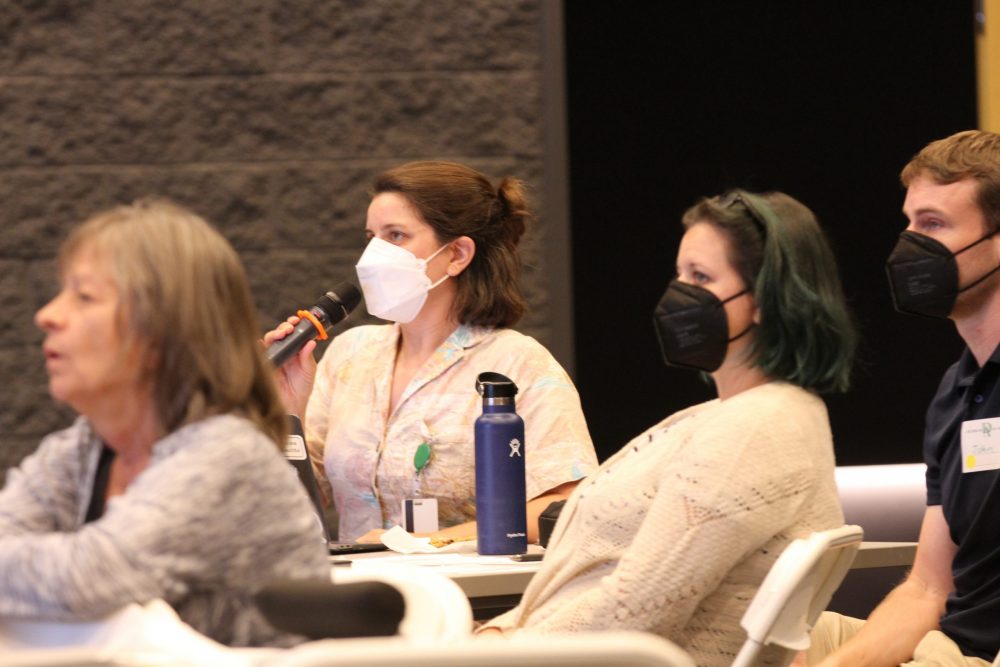
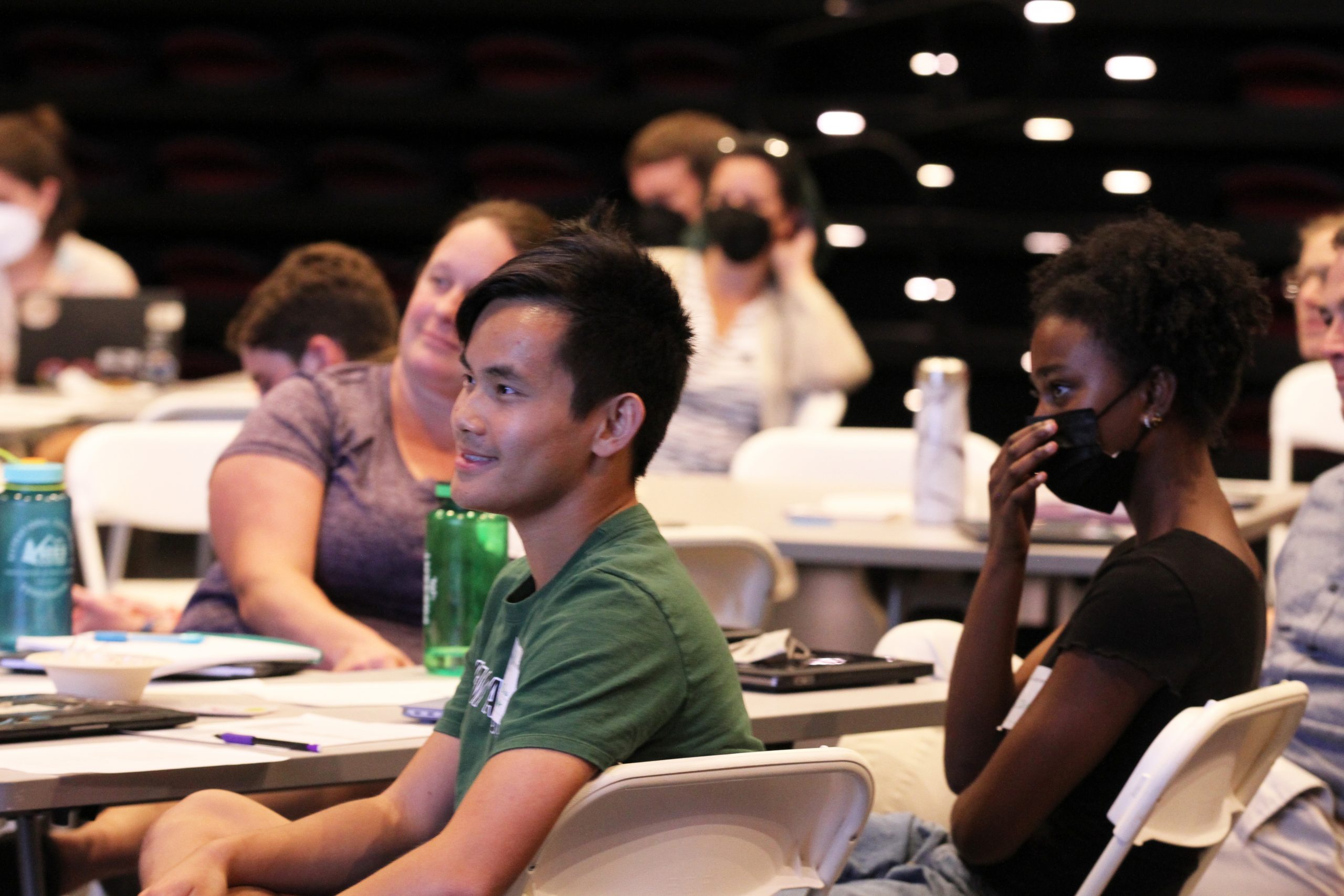
Ultimately, Jaimie encouraged us to:
- Find our own entry points into this work and recognize the different entry points of others. While the hope is for more collective action, recognize that individuals have their own motivations that drive them, and unique skills to apply.
- Distinguish symptoms from problems and look at the highest level problem in our area of influence. She called this “looking upstream.” Sometimes we can feel empowered to make big change…other times, we need to start small and accept what we can’t control.
- Avoid focusing on UNsustainability. Teachings and media that promote doom and gloom shut people down, whereas a change in mindset allows for more optimism and motivation to take action individually and collectively.
- Keep our eyes on the goal and monitor indicators of success along the way.
With the coaching from Jaimie Cloud, participating faculty will “sustainabilize” lesson plans and curriculum, helping students develop more flexible, creative, problem solving mindsets.
Concurrently, consultants from Green Places will help DA develop metrics to measure the carbon footprint of our four divisions. Through this work, we will identify the most significant and targetable sources of carbon emissions and pollution (e.g., waste generation, energy use, vehicular emissions, water pollution). Creative, collaborative action steps will develop from there (Jaimie recommends taking the most “visible, desirable, and doable” action steps first).
Most importantly, all these actions require social contracts. Once we’ve identified our contributions to environmental problems, we must work together joyfully, creatively, and collaboratively, to discover and execute solutions. Whether we’ve been engaged in this work for years, or are just building awareness of environmental issues, all must recognize we only have one planet. We are all in this together!
